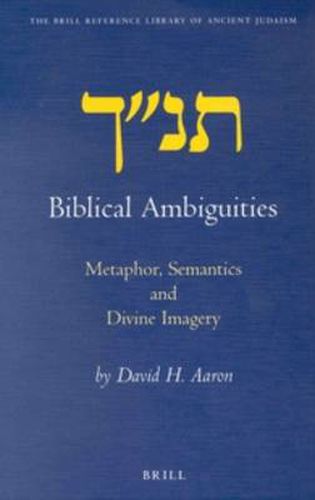Readings Newsletter
Become a Readings Member to make your shopping experience even easier.
Sign in or sign up for free!
You’re not far away from qualifying for FREE standard shipping within Australia
You’ve qualified for FREE standard shipping within Australia
The cart is loading…






Biblical Ambiguities poses as its central question: when we read a passage in the Hebrew Bible, how do we know whether the passage was meant literally or metaphorically? This study argues that our assumptions as to how language works influences the way we interpret biblical texts. Drawing upon contemporary linguistic theory, Aaron seeks to place before the reader a strategy for deciphering biblical idioms within a theory of semantics, using divine imagery in the Hebrew Bible as the primary focal point. This work presents a gradient model of meaning based on Relevance Theory and the writings of Ray Jackendoff. While numerous biblical passages are considered in detail, the main test case for Aaron’s approach to meaning and metaphor is the Israelite attitude toward idols. Although biblical ideology is usually portrayed as contrasting a literalist idolatry with a more sophisticated Israelite theology, Aaron argues that policies regarding icons had less to do with theology than the politics of governance and language. Part of that critique regards common scholarly assumptions about the literal or metaphorical character of divine imagery and idols. The metaphorization or the literalization of biblical images has served as a reading strategy since ancient times, and often persists in scholarly discourse today. Perhaps as important as Aaron’s suggestion of an alternative approach to the problem of distinguishing metaphorical from literal language, is that his argument raises our consciousness of how we go about interpretive acts when writing the history of Israelite theology.
$9.00 standard shipping within Australia
FREE standard shipping within Australia for orders over $100.00
Express & International shipping calculated at checkout
Biblical Ambiguities poses as its central question: when we read a passage in the Hebrew Bible, how do we know whether the passage was meant literally or metaphorically? This study argues that our assumptions as to how language works influences the way we interpret biblical texts. Drawing upon contemporary linguistic theory, Aaron seeks to place before the reader a strategy for deciphering biblical idioms within a theory of semantics, using divine imagery in the Hebrew Bible as the primary focal point. This work presents a gradient model of meaning based on Relevance Theory and the writings of Ray Jackendoff. While numerous biblical passages are considered in detail, the main test case for Aaron’s approach to meaning and metaphor is the Israelite attitude toward idols. Although biblical ideology is usually portrayed as contrasting a literalist idolatry with a more sophisticated Israelite theology, Aaron argues that policies regarding icons had less to do with theology than the politics of governance and language. Part of that critique regards common scholarly assumptions about the literal or metaphorical character of divine imagery and idols. The metaphorization or the literalization of biblical images has served as a reading strategy since ancient times, and often persists in scholarly discourse today. Perhaps as important as Aaron’s suggestion of an alternative approach to the problem of distinguishing metaphorical from literal language, is that his argument raises our consciousness of how we go about interpretive acts when writing the history of Israelite theology.